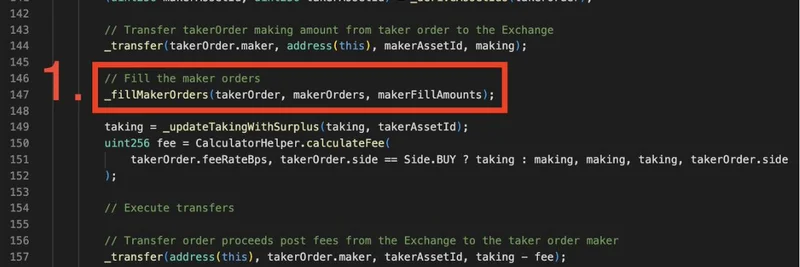TL;DR
- The SAMMY ticker appears across chains, and the specific contract 0x36b3ee3227f5b1d1e72d58a5491031959a84624f has limited verified public info.
- Mentions exist of SAMMY on BNB Chain (BSC), but visibility for this exact address is sparse; always verify chain, contract, and liquidity before trading.
- Use a strict DYOR checklist: confirm the token tracker, audit contract functions, check owner permissions, taxes, blacklist logic, and LP locks.
- If you do trade or monitor, validate the exact address and use reputable tools. You can review the Ethereum address on gmgn.ai: https://gmgn.ai/eth/token/fV1R5sZ5_0x36b3ee3227f5b1d1e72d58a5491031959a84624f
What we actually know
- Symbol: SAMMY.
- Contract under review: 0x36b3ee3227f5b1d1e72d58a5491031959a84624f.
- Public data for this exact address is thin. That usually means one of the following:
- It’s very new or inactive.
- It has minimal liquidity or holders.
- It’s not a token contract (could be a wallet or another contract type).
- It’s a niche or private deployment with little public-facing presence.
In broader meme-coin chatter, “SAMMY” is a recurring ticker tied to speculative trading narratives. However, these mentions often point to different contracts and even different chains. Treat each contract-address instance as a separate asset.
Cross-chain confusion: BNB Chain vs Ethereum
- Same ticker, different addresses: Meme tickers like SAMMY frequently appear on multiple chains (e.g., BNB Chain and Ethereum). Each deployment is distinct.
- Why you might not find it on an explorer:
- Wrong chain selected (e.g., looking on BscScan for an Ethereum address or vice versa).
- It’s not a token contract (no token tracker visible).
- Token exists but has not been indexed by common dashboards due to low activity.
How to confirm the basics:
- On Ethereum: search the address on Etherscan. Check for a “Token” profile (total supply, decimals, holders).
- On BNB Chain: search the same address on BscScan. If nothing meaningful appears, it may not be a BEP-20 token.
- If the address doesn’t show a token tracker on the selected chain, be cautious—do not rely on ticker name alone.
DYOR checklist: fast but thorough
Before interacting with the contract, walk through these checks. They’re simple but will save you from many avoidable risks:
Contract identity
- Verified source code on Etherscan/BscScan.
- Token name, symbol, decimals, total supply visible.
- Proxy pattern? If yes, who can upgrade? Upgradable tokens can change behavior after you buy.
Owner and permissions
- Is ownership renounced? If not, what can the owner do?
- Look for functions like setTax, setFees, setBlacklist, setMaxTx, setMaxWallet, pause/unpause trading.
- Check for mint/burn/swapBack rights. Unbounded mint is a red flag.
Trading logic
- Taxes: buy/sell tax above ~10% is a major concern in meme coins. Extremely high taxes can make selling impractical.
- Blacklist/whitelist mechanisms: can the team block or exempt wallets from fees or transfers?
- Trading toggle: some contracts require “enableTrading”; if dev controls it, they can trap buys.
Honeypot risk
- Simulate a small buy and sell once liquidity is present. If buy succeeds but sell fails or reverts, it may be a honeypot.
- Review DEX trade history for successful sells by multiple wallets.
Liquidity and pairs
- Identify the primary pair (ETH or WETH on Ethereum; WBNB on BNB Chain).
- LP status: Is liquidity locked (e.g., via Team Finance, Unicrypt) or burned? If unlocked, it can be pulled.
- LP concentration: Is most liquidity controlled by one wallet?
Holder distribution
- Top 10 holders’ share. If a few wallets own a huge chunk, price can be heavily manipulated.
- Check whether CEX hot wallets or deployer-linked wallets dominate holdings.
Socials and communication
- Official website, Twitter/X, Telegram, GitHub. Absence doesn’t kill a project, but combined with high risk flags, it’s a warning.
- Consistency: same contract address across all official channels.
Market and liquidity checks
- Ethereum path:
- Search the address on Etherscan for token status and “DEX Trades” tab.
- Inspect pairs on Uniswap by searching the address in the Uniswap Interface after confirming it’s an ERC-20.
- BNB Chain path:
- If you find a BEP-20 token with this address (or a different SAMMY contract), check BscScan and PancakeSwap.
- Analytics and trading tools:
- Monitor on gmgn.ai: https://gmgn.ai/eth/token/fV1R5sZ5_0x36b3ee3227f5b1d1e72d58a5491031959a84624f
- Consider cross-checking on common charting dashboards or scanners to confirm liquidity, taxes, and recent trades.
Note: Some third-party mentions claim SAMMY is convertible/tradable via various platforms. Treat such claims skeptically and verify live order books or conversion quotes with the exact contract address. Never rely on ticker names alone.
If you choose to trade
- Always paste the full contract address. Don’t search by “SAMMY.”
- Start with a test transaction. Confirm you can sell.
- Mind gas settings and slippage, especially if the token sets high taxes or uses anti-bot logic at launch.
- Track your risk: in meme coin land, 100% drawdowns and liquidity pulls happen quickly.
Why multiple “SAMMY” tokens exist
- Meme tickers are recycled because they’re short, familiar, and meme-friendly.
- Different teams can deploy unrelated tokens with the same name across chains.
- Your only safety anchor is the exact contract address and chain.
Bottom line
Public, verifiable information for SAMMY at 0x36b3ee3227f5b1d1e72d58a5491031959a84624f is currently limited. That doesn’t automatically mean it’s malicious, but it does mean risk is high. Confirm chain and token status on-chain, audit the contract permissions, verify liquidity is locked, and only proceed if the fundamentals make sense to you. If you monitor or interact with the address on Ethereum, you can use gmgn.ai’s dedicated page to observe activity and liquidity: https://gmgn.ai/eth/token/fV1R5sZ5_0x36b3ee3227f5b1d1e72d58a5491031959a84624f
Not financial advice. Always do your own research.



